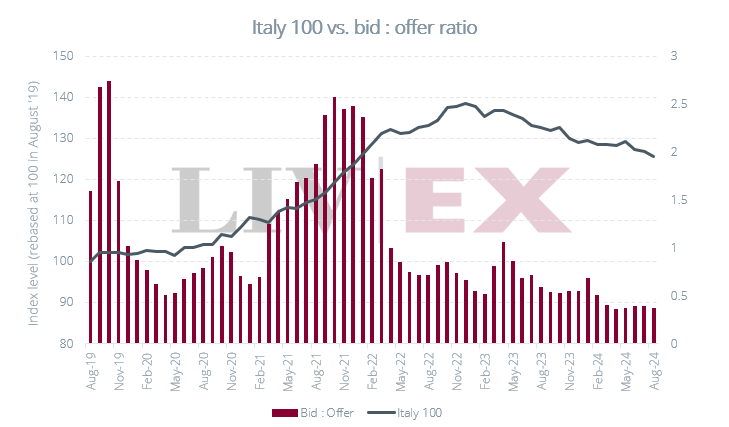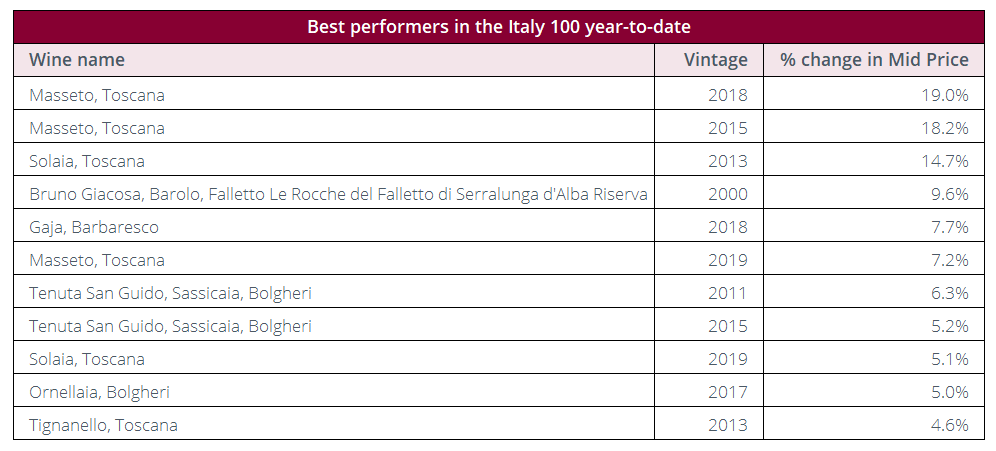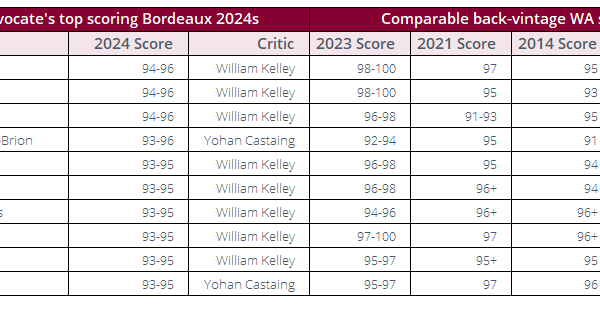What’s happening in the market?
So far this week, Bollinger R.D. 2008 has come in as the top-traded wine by value, followed by Emmanuel Rouget’s Echezeaux Grand Cru 2003 and Opus One 2018.
Piedmont has taken a 7.7% share of traded value so far this week, up from its close at 3.4% last week. Several vintages of Giacomo Conterno’s Barolo Monfortino Riserva and Barbera d’Alba Francia have traded actively.
From Tuscany, the 2009 and 2016 vintages of Masseto have traded, alongside Antinori’s Tignanello 2021.
Today’s deep dive: high bid-to-offer ratios in the Italy 100
In our July Market Report, we analysed the Liv-ex Fine Wine 1000’s bid-to-offer ratio as a measure of market sentiment. We noted that the fall of the ratio in late 2021 predated the turn of the market by over 6 months. The bid:offer ratio of the Italy 100 (calculated as the value of firm bids to the value of firm offers) tells a similar, albeit less dramatic story.
We have previously reported on Italy as a beacon of stability amidst the broader market’s downturn. The Italy 100 is down 5.7% over the past two years – a far milder decline than the Liv-ex 1000’s 18.6% decrease. While the index’s bid:offer ratio did fall substantially almost a year prior to prices of the component wines declining, it remained above 0.5 (a threshold that we have previously used to predict continued stability or growth) until March this year. This is in contrast to the bid:offer ratio of the Liv-ex 1000, which has remained under 0.5 since early 2023.
We also observe that, while there appears to be a time lag between the fall of the ratio and the fall of the index, they tend to rise simultaneously. Understandably, market participants want to sell at the highest possible price. While they are reluctant to devalue their stock – holding off until certain the market is turning – they are quick to raise prices as sentiment improves.
Of the 10 component wines of the Italy 100, Masseto boasts the highest current bid:offer ratio. Ahead of the upcoming release of the 2021 vintage, we evaluate the Masseto index (constructed using monthly Mid Prices of the past 10 physical vintages) alongside its bid:offer ratio. Over the past three months, we have seen increasingly positive sentiment for Masseto. The bid:offer ratio, calculated as the monthly average value of bids to monthly average value of offers, surpassed one in August, up from 0.6 in March.
Masseto has not been immune to the market’s downward momentum, but since the start of the year, the index has appreciated by 3.4%. With demand outweighing supply, there may be some indication that prices are likely to continue rising.
Only around 30,000 bottles (2,500 12×75 cases) of Masseto are thought to be produced every year. Given such low production numbers, it is perhaps unsurprising that demand for this wine exceeds supply. Still, even producers such as Petrus – known to make a similar number of bottles annually – currently have much lower bid:offer ratios (0.44). Moreover, both bids and offers have increased since March. The improvement in the ratio is driven by the increase in bid value outweighing the increase in offer value, rather than by a decrease in offers or trading activity overall.
As shown in the table below, Masseto has more entrants into the top 10 year-to-date price performers than any other wine, with the 2018 and 2015 vintages taking the top spots.
There are currently 57 LIVE opportunities for Masseto on the market. Log in to the exchange to view them.
Liv-ex analysis is drawn from the world’s most comprehensive database of fine wine prices. The data reflects the real-time activity of Liv-ex’s 620+ merchant members from across the globe. Together they represent the largest pool of liquidity in the world – currently £100m of bids and offers across 20,000 wines.







